2025
[ Customer Service ]
カスタマーサービス
How to Order
Seed Learning products can be ordered at all bookstores in Japan. Many bookstores in Japan stock Seed Learning products in-store; however, titles available at bookstores vary among shops. Please refer to “Where to buy” on Tryalogue Education’s website.
Price Information
The prices and information in this catalog are accurate as of November 1, 2024 and all prices include the consumption tax. Prices are subject to change without notice.
What’s an MP3 CD?
Some series of material contain comprehensive audio components in the form of MP3 CDs.
MP3 CDs are CDs that are designed to be played on a computer or through a device that supports MP3 CDs. When you use an MP3 CD player, it usually takes longer to read data, it may even take a few minutes.
For general information
Please feel free to make an inquiry below if you have any questions about Seed Learning products.
FAX : 03-6383-5992
E-mail : contact@tryalogue.co.jp
Web : www.tryalogue.co.jp
Inquiry by e-mail is appreciated.
購入方法
ご注文は全国の書店またはブックセラーへお願いい たします。また在庫状況は店舗ごとに異なりますので、 予めご了承ください。株式会社トライアログ・エデュケ ーションのウェブサイト”取扱店”に書店・ブックセラー のリストを掲載しておりますので、参考になさってくだ さい。
価格
当カタログに記載しております価格は 2024 年 11 月 1日現在の税込価格です。予告なく変更される場合も ありますので、ご了承願います。
MP3 CDとは?
教材の一部では音声をMP3ファイルのCDにて提供し ております。再生にはコンピューターが適しています が、MP3 CD対応のCDプレイヤーでも再生が可能で す。その際はデータの読み込みに時間が掛かり、再生 まで数分かかる場合もございます。
商品についてのご質問
Seed Learning社の教材についてのご質問は以下よ りご連絡願います。
FAX : 03-6383-5992
E-mail : contact@tryalogue.co.jp
Web : www.tryalogue.co.jp より 「メールでのお問い合わせ」をご利用願います。



2025 Seed Learning Level Chart







































































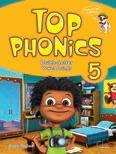
www.seed-learning.com/TP Free Online Program (See p.76)

TOP PHONICS
Top Phonics is an easy-to-use five-level phonics series developed for young learners of English. Starting in Top Phonics Book 1, students will learn to recognize and say the letters of the English alphabet. By the end of Book 5, students will be able to read and write words and phrases. The five levels of Top Phonics provide a guided, step-by-step presentation of single-letter sounds and vowel and consonant combinations. Top Phonics allows learners to develop their English skills in an engaging, systematic, and effective manner.
Features
• 5 charming characters who appear throughout all five books
• Entertaining chants and songs to provide listening and pronunciation practice
• Fun stories to develop reading skills
• Engaging activities to build reading, listening, and writing skills beyond rote practice
• Strategic introduction of sight words to increase reading fluency
• Enjoyable review activities at the end of each book
Components
Student Books
- Top Phonics 1 Single-Letter Sounds
- Top Phonics 2 Short Vowel Sounds
- Top Phonics 3 Long Vowel Sounds
- Top Phonics 4 Double-Letter Consonant Sounds
- Top Phonics 5 Double-Letter Vowel Sounds
Workbooks 1-5


Meet the Top Phonics Kids!
Five young children are the main characters of the series. These fun characters appear in each unit and throughout the series. Students will be able to identify with the interests and hobbies of these characters as they encounter them in various situations in the books.
















Student Book



[ New Letters and Sounds ]
Introduction to target sounds and words with chants, writing practice, and tracing practice


[ Further Practice & On My Own ]
Reinforcing newly acquired knowledge and reviewing words and sounds from earlier units

[ New Words ]

Understanding the letter-sound relationship and vocabulary building


[ On My Own & Story & Wrap-Up ]
Reading and decoding and a fun song based on the story page



• MP3 Audio QR Code
Top Phonics Readers 1-5

• QR codes link to online videos
• 8 bonus story cards





• Workbook (sold separately)
Top Phonics 6 is an easy to use review of the essential sounds of English, ideal for young learners who can already recognize and pronounce single letter sounds with confidence. Top Phonics 6 covers a variety of sounds that are introduced in Top Phonics 2, 3, 4, and 5.

















• Audio CD included
• 4 stories per book
Top Phonics Readers is a 5-book series developed for young learners who are already familiar with the English alphabet. Top Phonics Readers can be used as a stand-alone reading series, or as a supplement to Seed Learning’s Top Phonics textbook series.
TOP KIDS






www.seed-learning.com/TK

























Top Kids is a six-level course for young English language learners. This engaging and instructive course incorporates a systematic double-strand approach to introduce vocabulary and grammar within thematic units graded over six levels.
The double-strand approach to building vocabulary and grammar skills of learners is key to the course. English language learners need to acquire vocabulary in order to comprehend English and participate in classroom discussions, and as well, it is key to reading comprehension. In addition, grammar is central to the teaching and learning of languages as it is the foundation of language.
Top Kids prepares young learners to be able to understand and communicate well in English on a variety of subjects.
Features
• Engaging characters with whom students will identify as they study
• Functional dialogs to demonstrate effective social behavior for children
• Expansion activities for collaborative and communicative practice
• Graded passages for extensive reading practice
Components
Student Books with MP3 CDs
- Top Kids 1 An Introduction to English
- Top Kids 2 Second Steps in English
- Top Kids 3 Personalizing English
- Top Kids 4 Active English
- Top Kids 5 Growing with English
- Top Kids 6 Sharing in English
Workbooks 1-6



Student Book



Introduction to target words and language patterns through engaging illustrations and simple text.
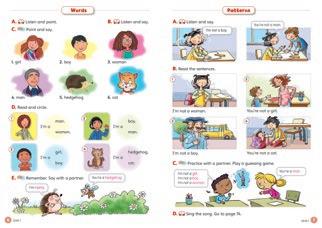
Presentation of additional target words for the unit along with speaking focused activities.





Value and citizenship lessons are presented through the series characters. Lessons wrap up with phonics reviews for the lower levels and reading practice for the higher levels.

EXPANSION ACTIVITIES


Odd unit expansion pages present practical classroom language activities along with review of target vocabulary from the unit.


Even unit expansion pages include fiction and nonfiction passages for reading fluency development through extensive reading practice.



FAST TRACK
Fast Track is a three-level series designed for young-adult and adult learners of English who have had some exposure to English but need review practice and fluency development to become better communicators. Each thematically-organized unit in the series integrates functional language models with skill-based activities. Lessons guide students from speaking together using structured dialogs to engaging in more flexible conversations using theme-based sets of questions. Informative readings on topics provide springboards for additional engaging in-class discussion.
Features
• A multi-skill approach to developing communicative skills while strengthening accuracy and fluency skills of learners
• Authentic, conversational dialogs that model language variations to enrich comprehension and production skills
• Interactive and communicative tasks to engage learners while challenging them to stretch their skills
• Model responses to support student completion of all productive speaking and writing tasks
• Fundamental grammar points linked to each unit’s listening and reading samples
• Video and audio recordings with linked tasks for listening comprehension, modeling pronunciation, and developing fluency
• Pair-work question sets for fun and flexible conversation practice

Student Book
Getting Ready



The Warm-up section of the Fast Track series begin with a short listening activity along with various comprehension activities and a guided discussion question to activate basic language that students may already know related to the unit’s theme.
Expressions in Use

A graphic presentation of expressions related to the unit’s theme shows language options for student pairs to practice within a simple substitution-based dialog.
Speaking
Students practice speaking from their own knowledge through listening, note-taking, and sharing. Additional speaking is practiced through creating questions linked to the unit’s theme and language functions.



Conversation

Variations for the language functions related to the unit theme are presented in a listening task that targets modeling and pronunciation. Students are then encouraged to creatively adapt the dialog with suggested expressions or their own ideas.
Sounds Fun










Short video dialogs are presented in repeated sequences. Variations in the sequence remove subtitles and/or audio for students to practice from memory.
Pair Work


Role Play
A dialog structured around substituting students’ ideas or information allow for personalization of the language being studied.

Reading
A short passage describing well-known people or current topics help students relate the unit’s theme to today’s world and their personal lives.

Grammar

Each unit concludes with a review of a grammar topic linked to the language that is central to the unit's theme.




An extensive list of discussion questions are included in each unit. After writing their own ideas to answer the questions, students practice a semi-guided conversation using the questions to interview each other.



A short comprehension activity reinforces informative content from the reading passage. This is followed by a discussion topic supported with images to stimulate student responses.





Writing & Critical Thinking
Writing models and a Critical Thinking task support students in creating short presentations to give for the class.




www.seed-learning.com/EASYFR
EASY FIRST READING
Pre-Beginning to Beginning



Easy First Reading is a three-book series created to teach students how to read. The series uses an engaging step-by-step approach to build the reading skills of English language learners through practice of phonetic decoding and high-frequency word reading. Each unit features two illustrated passages with useful, carefully graded vocabulary and simple sentence patterns. These books were written and designed to motivate language learners to enjoy English language reading from the very beginning. Students who complete this series will achieve a strong reading foundation.
Features
• Two original reading passages per unit developed around fun, kidfriendly reading topics
• Colorful, captivating illustrations to aid in understanding
• High-frequency words and review words to promote reading competency
• Illustrated, simple, kid-friendly vocabulary
• Reading comprehension activities to build language skills
• Practical exercises to expand reading abilities and increase exposure and practice with English
• Pull-out full-color workbook included































Student Book
Warm Up

Introduces students to useful high-frequency words with the help of a chant video and interesting illustrations.











































Reading
Has passage based on Aesop’s Fables and features original illustrations. The key vocabulary consists of phonics words, making the passages easy to read.

Comprehension
Checks students’ comprehension of the reading passage and provides guided practice with the grammar focus of the unit.




Vocabulary






Extra Reading
Sample Chant Video


Helps students practice the new vocabulary words with two recognition activities.



Check It
Has an additional reading passage with another original illustrations that reviews grammar and vocabulary.

Checks students’ comprehension of the reading passage.

Workbook































Word Practice

Gives students a chance to practice the unit vocabulary and word recognition.




Sentence Practice











































Provides sentence practice while further reviewing the target vocabulary and grammar.
























Reviews unit vocabulary, grammar, and sentence structure.


EASY FUN READING


















Level: Beginning









Easy Fun Reading is a three-level series devised for emergent students of English who are beginning to move from the learning-to-read stage into the reading-to-learn stage. Easy Fun Reading is designed to set a foundation in reading in order to prepare students for future study of academic material in English. The series also utilizes a four-strand approach that provides the framework for students to practice receptive and productive skills alongside focused language study and fluency practice.
Features









• Graded reading passages




• Word recognition activities to stimulate reading fluency
• High-frequency sentence patterns to highlight useful grammatical structures
• Review units with activities and games to reinforce vocabulary acquisition
• Fun illustrations and images that aid in comprehension and retention
• Pull-out full-color workbook included
www.seed-learning.com/EFR













Student Book

New Words
Lists key vocabulary along with illustrations that provide visual definitions for the words. An audio recording of the words is available.

Word Watch

Presents a quick seek-and-find word recognition activity to focus students on highfrequency words found in the passage.
Check It
Includes two to three reading comprehension questions related to the unit’s reading passage.

Learn It

Reinforces the unit’s target vocabulary through visual recognition and written practice.




Reading
Presents a simple, fun original passage using grammar structures and vocabulary easy for beginner students. An audio recording of each passage is available.

Say It
Practices speaking and reading comprehension while reinforcing key sentence structures. Here, students match written information with images selected to review the unit’s new words.

Know It

Practices listening comprehension by having students match aural information with images selected to review the unit’s target vocabulary and key concepts.
Workbook



Workbook

Provides extra vocabulary reinforcement, reading fluency drills, and basic writing practice that can be completed as homework.






FUN READING
Level: High-Beginning

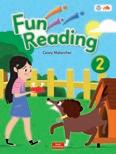

www.seed-learning.com/FR
Free Online Program (See p.76)










Fun Reading is a three-level series designed for elementary students of English who are moving from the learning-toread stage into the reading-to-learn stage. Fun Reading incorporates short and simple fi ction and non-fi ction texts to support students in developing fundamental readings skills required for future study of academic material in English. Strict vocabulary control of all passages and activities allows students to gradually accumulate new vocabulary while practicing learned items from previous units.
Features
• Graded fiction and non-fiction reading passages
• Pre-reading questions to stimulate interest and background knowledge
• Fun seek-and-find questions that ask students to carefully consider illustrations and photos
• Review units with activities and games to reinforce vocabulary acquisition
• Pull-out full-color workbook included













Student Book


Words to Know

Lists key vocabulary along with illustrations that provide visual definitions for the words.
Find It!

Presents a quick seekand-find activity to focus students on details of the unit’s main illustration or photo.
After Reading
Reading Comprehension
Includes three comprehension questions related to the unit’s reading passage.

Summarizing


Warm Up
Uses a key question to stimulate students’ interest in the unit topic.

Reading

Presents a simple, fun, original story using grammar structures and vocabulary familiar to high-beginning students. An audio recording of each passage is available.
Practice It

Reinforces the unit’s target vocabulary and passage content through various types of summary activities.




Listening Practices listening comprehension by having students match aural information with images selected to review the unit’s target vocabulary.


Vocabulary Consolidation Highlights the target vocabulary of the unit along with previously studied vocabulary items within the series.
Workbook





Provides extra vocabulary reinforcement, reading fluency drills, and basic writing practice that can be completed as homework.




EASY FUN FACTS






















Level: Beginning





















Easy Fun Facts is a three-level series designed for elementary students of English who are being taught comprehension skills in the reading-to-learn stage. Easy Fun Facts exclusively focuses on nonfiction texts to equip students for future study of academic material in English. The series also utilizes a fourstrand approach that sets a foundation for students to practice receptive and productive skills alongside focused language study and fluency practice.
Features






























• Graded nonfiction reading passages that are informative and accessible for entry-level students


































• Pre-reading questions to stimulate interest and background knowledge
• Sight word practice to increase recognition and reading fluency
• Quick tasks to practice scanning skills with each passage



www.seed-learning.com/EFF
• Review units with activities and games to reinforce vocabulary acquisition
• Pull-out full-color workbook included





















Student Book

Key Words
Provides a visual dictionary for the four key vocabulary words. An audio recording of the words is available.
Sight Words

Think


Uses a key question to stimulate students’ interest in the unit topic.


Read and Answer

Includes three comprehension questions related to the unit’s reading passage.
Say and Choose
Reinforces the unit’s target vocabulary through an oral practice and visual recognition activity.


Workbook


































































Highlights three sight words that appear in the unit’s passage.
Reading









Check It


Presents an easy, fun original passage using grammar structures and vocabulary designed for entry-level students. An audio recording of each passage is available.

Asks students to scan the passage and/or image to find key points in preparation for answering reading comprehension questions on the next page of the unit.
Match and Write

Highlights the target vocabulary of the unit along with key grammar structures for focused language practice.







Show and Tell

Supports basic speaking practice through simple substitution drills with a partner.

Provides extra vocabulary reinforcement, reading fluency drills, and basic writing practice that can be completed as homework.




www.seed-learning.com/FF
FUN FACTS
Level: High-Beginning








Fun Facts is a three-level series designed for elementary students of English who are seeking to develop their comprehension skills in the reading-to-learn stage. Fun Facts exclusively focuses on nonfiction texts to prepare students for future study of academic material in English. The series also utilizes a fourstrand approach that sets a foundation for students to practice receptive and productive skills alongside focused language study and fluency practice.
Features
• Graded nonfiction reading passages that are informative and accessible for high-beginning students
• Pre-reading questions to stimulate interest and background knowledge
• Key Structure notes to highlight useful grammatical structures
• Check It tasks to practice scanning skills with each passage
• Pull-out full-color workbook included











Student Book


Key Words
Lists key vocabulary along with illustrations that provide visual definitions for the words.

Think
Uses a key question to stimulate students’ interest in the unit topic.



Key Structures
Highlights one to three grammatical structures that appear in the unit’s passage.

Reading
Presents a simple, interesting reading passage using grammar structures and vocabulary familiar to high-beginning students. An audio recording of each passage is available.

Check It

Asks students to scan the passage to find key points in preparation for answering reading comprehension questions on the next page of the unit.
Read and Answer

Includes three comprehension questions related to the unit’s reading passage.
Say and Choose
Reinforces the unit’s target vocabulary through an oral practice and visual recognition activity.
Match and Write





Reviews the target vocabulary of the unit along with key grammar structures for focused language practice. Show and Tell

Supports basic speaking practice through simple substitution drills with a partner.






Provides extra vocabulary reinforcement, reading fluency drills, and basic writing practice that can be completed as homework.






www.seed-learning.com/TRFF
TIMED READING FOR FLUENCY
Level: High-Beginning to Intermediate













Timed Reading for Fluency is a useful series for students who want to develop their reading fluency. Because fluency development requires students to make the best use of what they already know, the reading passages in this series target familiar vocabulary and grammar. Such reading material allows students to practice recognizing and processing texts that they read without undue struggle while aiming toward a faster reading speed. This series of books uses timed readings of standard lengths so that students can track their progress throughout the course.
Features
• Reading texts developed within controlled vocabulary and grammar guidelines
– Timed Reading for Fluency 1: 200 word passages with 800 headwords
– Timed Reading for Fluency 2: 275 word passages with 1100 headwords
– Timed Reading for Fluency 3: 350 word passages with 1500 headwords
– Timed Reading for Fluency 4: 400 word passages with 2000 headwords
• Thematically organized chapters that help students focus on subject-specific content and language
• Chapter preview pages to familiarize students with key vocabulary and proper nouns found in the chapter’s reading passages
• Reading speed charts at the back of each book for students to record their comprehension question score and reading speed for each passage
• Audio recordings of all passages for supplementary listening
• Downloadable answer key
Downloadable Resources:
Tests
★については下記までお問い合わせください。
Please contact the following regarding ★
E-mail : contact@tryalogue.co.jp

Student Book



















Chapter








Reading
Passages always appear on right facing pages so that students can focus on reading without the distraction of other related texts.


Time
Each passages is followed by a place to record time spent reading. These times can be charted in the Speed Reading Chart at the back of the book.






Word Count
All passages in a book are written to a standard length to facilitate analysis of one’s reading speed.






Students should target a reading speed of 250 wpm (words per minute). By charting their reading speed for different passages using the charts at the back of each book, students can better understand how well they read at present and how much they need to improve. The four levels of Timed Reading for Fluency can provide effective practice for students at any level.














• Each book consists of eight themes (chapters); each chapter consists of five passages.










• Introductory pages expose students to concepts and key vocabulary found in the chapter.
• At the end of the introductory pages, students can find a list of proper nouns appearing in the chapter’s passages.
Reading Comprehension
Comprehension questions always appear on left facing pages so that students can check how much they understood from their reading without looking at the passage.


Extra Practice
An additional activity targeting useful vocabulary items encountered in the lesson’s reading passage follows each passage’s set of comprehension questions.

• Minimal suggested reading speeds for various tests: IELTS® 150 wpm TOEFL® 200 wpm



www.seed-learning.com/RAW






READING FOR THE ACADEMIC WORLD
Level: High-Intermediate to Advanced
Reading for the Academic World is a three-book series designed for students who are seeking to develop their academic reading skills with particular focus on passages that incorporate items from the Academic Word List. Reading for the Academic World provides students with a range of informative texts from various academic fields including history, natural science, literature, social issue, psychology, business, linguistics, and more. All passages in the series are supported with activities to provide opportunities for students to practice comprehension of input, refinement of output, fluency with current skills, and languagefocused learning.
Features
• Reading passages developed to target exposure and practice of more than 500 words from the Academic Word List
• Thematically organized paired readings covering a broad range of academic topics
• Comprehension activities that include question types commonly found on standardized test of English
• Vocabulary development activities to reinforce items presented from the Academic Word List
• Language extension activities to practice grammar structures and paraphrasing
• Audio recordings of reading passages
★については下記までお問い合わせください。
Please contact the following regarding ★ E-mail : contact@tryalogue.co.jp






























































Student Book

Pre-Reading Questions
Three questions prepare students for the unit reading by asking them to think about their experiences or opinions in connection with the topic of the unit’s passage.

Vocabulary Preview

































Twelve words from the Academic Word List are highlighted in each passage of the series. Simple definitions reflecting usage of the words in the unit’s passage are provided in a pre-reading activity.
Topic at a Glance
Before each unit’s passage, students will read a short paragraph commenting on the focus of the reading.

Reading Comprehension
Multiple-choice questions after each passage focus on common question types for tests of English reading.

Language Focus
A particular grammar structure found in the reading passage is reviewed and practiced in each unit.





Paraphrasing Practice
Students read sample paraphrases to match with content from the reading passage.








Readings
The three levels in the series present informative academic passages of 600, 700, or 800 words. Footnotes for each passage provide additional vocabulary support for students.

Vocabulary Reinforcement



Vocabulary Extension
A variety of tasks help students extend their knowledge of academic words.

Two activities reinforce the twelve vocabulary items highlighted in the unit. One activity practices usage of the words in a related but new context. The second activity focuses on common collocations incorporating the target vocabulary.


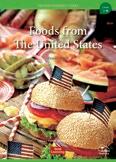

www.seed-learning.com/CRF
CULTURE READERS: FOODS
Level: High Beginner to Low Intermediate
Series Editor: Anne Taylor
Seed Learning’s Culture Readers: Foods is a new nonfiction series that explores foods and culinary traditions around the world. The series explains dishes that are central to the cuisine of various nations while looking at important aspects of these foods. Readers will get a glimpse into the history of how people began eating certain foods and the customs that surround these foods. In particular, the series aims to broaden the perspective of learners who may have limited exposure to other cultures by presenting positive and accurate portraits of foods and traditions around the world.
Features
• 20 titles in the series
• Provide informative descriptions of what people eat around the world and how these foods came into being
• Allow learners to develop their reading fluency through extensive reading practice
• Present strictly controlled vocabulary over the graded levels of the series
• Include comprehension questions in each reader to encourage learner accountability
• Highlight both subject-specific and level-appropriate terms in succinct glossary pages
• Provide menus consisting of foods that appeared in the reading and more
• Suggest additional words to use when discussing the foods introduced in each reader

Levels and Content





































































































































































Why is learning about food and culture important?
- Marvin Harris (American anthropologist and author)
- Marcus Garvey (Political Activist, Journalist, and Orator)
















“A people without the knowledge of their past history, origin and culture is like a tree without roots.”





“The exchange of food is the exchange of culture, and thus understanding a place’s food can be an incredible insight into their culture and lifestyle.”




www.seed-learning.com/CRH
CULTURE READERS: HOLIDAYS
Level: Low-Beginning
Series Editor: Kelly Daniels
Seed Learning’s Culture Readers: Holidays is a new nonfiction series that explores holidays and festivals celebrated around the world. The series explains important aspects of these holidays including when they are celebrated, how they began, and what people do for them. Readers will gain a better understanding of the history and beliefs of different cultures as they learn about dates and times of the year designated for celebrations worldwide. In particular, the series aims to broaden the perspective of learners who may have limited exposure to other cultures by presenting positive and accurate portraits of customs and traditions around the world.
Features













• 20 titles in the series
• Provide informative descriptions of how people celebrate cultural or religious holidays and festivals
• Allow learners to develop their reading fluency through extensive reading practice
• Present strictly controlled vocabulary over the graded levels of the series










• Include comprehension questions in each reader to encourage learner accountability
• Highlight both subject-specific and level-appropriate terms in succinct glossary pages
• Suggest additional topics for students to research and discuss on “Teachers’ Notes” pages





FUTURE JOBS READERS
Level: High-Beginning
Series Editor: Casey Malarcher

Seed Learning’s Future Jobs Readers is a new nonfiction series that explores exciting new careers that may soon become available to young people today. The series explains the type of work these careers will entail along with the kind of study and experience they require. Many of the careers that the series focuses on relate to developing technologies with applications in many different fields. In particular, the series aims to spark the interest of readers in considering the study of STEM-related subject areas that can open up new horizons for the next generation in the workplace.
Features
• 20 titles in the series




































• Provide informative descriptions of what people do in various careers along with basic requirements for entering certain fields
• Allow learners to develop their reading fluency through extensive reading practice
• Present strictly controlled vocabulary over the graded levels of the series









• Include comprehension questions in each reader to encourage learner accountability
• Highlight both subject-specific and level-appropriate terms in succinct glossary pages
• Suggest additional topics for students to research and discuss on “Teachers’ Notes” pages





www.seed-learning.com/CAR
CLASSIC ART READERS
Level: High-Beginner to Low Intermediate
Series Editor: Liana Robinson
Seed Learning’s Classic Art Readers is a nonfiction series that explores the lives and works of twenty artists from Renaissance art through to contemporary art. The series presents facts about the lives of the featured artists and their world-famous works of art. Each book in the series allows students to deepen their understanding of the past while looking from an artist’s perspective.
Features
• 20 titles in the series
• Provides informative descriptions of the life of each featured artist and explanation of their important works
• Allows learners to develop their reading fluency through extensive reading practice
• Presents strictly controlled vocabulary over the graded levels of the series
• Includes comprehension questions in each reader to encourage learner accountability
• Highlights level-appropriate terms in succinct glossary pages
• Provides audio tracks for enhanced flow, concentration, and comprehension
• Introduces important museums around the world

Levels and Content







































































































































































Why is learning about classic art important?
“Painting is a means of self-enlightenment.” – John Olsen
“An artist cannot fail; it is a success to be one.” – Charles Horton Cooley
“Everything has its beauty, but not everyone sees it.” – Andy Warhol



“Art enables us to find ourselves and lose ourselves at the same time.” – Thomas Merton































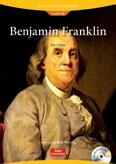




WORLD HISTORY READERS
Level: High-Beginning to Intermediate
Series Editor: Rob Waring

Seed Learning’s World History Readers is a nonfiction series from world history. There are stories about Cleopatra, Alexander the Great, Leonardo da Vinci, Genghis Khan, the French Revolution, the Birth of the USA, and much more. These are exciting stories about historical people and events which shaped our world then, and still do today.
Features
• 60 titles in the series
• Informative and engaging accounts of historical figures and events
• Extensive reading practice that allows learners to develop their reading fluency
• Strictly controlled vocabulary presented over the graded levels of the series
• Comprehension questions included in each reader to encourage learner accountability
• Subject-specific terms related to the reader’s topic explained




















































Interesting and Exciting Readers about World History!



















































































































Seed Learning’s World History Readers develops critical skills while giving students an opportunity to experience and reflect on key historical events, people, and places. With this series, students learn and understand how past world events affect people today.





























































The World History Readers series was designed to serve a dual purpose. One purpose of the series was to provide interesting and instructive materials for extensive reading practice. A second, and equally important, purpose of the series was to create a library of general knowledge accessible to young learners. As readers explore this library, they will expand their real-world knowledge of historical events that are important for students worldwide to learn.



www.seed-learning.com/WT
WRITING TIME
Level: Beginning
Writing Time is a three-book series designed to develop the writing skills of elementary students of English (CEFR A1). The series uses a model writing approach to build the writing skills of English language learners in a clear and accessible way. Each unit features three complete model passages presented through various activities. Students use the structures provided in these models along with their own ideas to create personal passages. Students who complete this series will develop stronger writing skills and gain confidence in their ability to write in English.
Features
• Wide range of writing topics including family, friends, school subjects, hobbies, interests, and special occasions
• Practical exercises and activities modeling how students can organize and prepare their own passages
• Multiple sample passages providing ideas for students to incorporate in their own writing
• Personal reflection questions within each unit to assist students with brainstorming
• Fundamental language patterns and sentence structures practiced through simple writing activities
• Repeated recycling of useful kid-friendly vocabulary
• Pull-out full-color workbook included
Downloadable Resources:
Student Book
New Words
Introduces key words related to the unit’s topic along with pictures to provide context for vocabulary items.

Sentence Practice
Provides additional vocabulary and grammar practice through writing and speaking and serves as a springboard for students to brainstorm about their own writing.

Writing Practice
Introduces ideas for alternative model passages through activities that mirror guided question from the first model passage.


Writing Skill
Gives a pattern-practice activity for review of a useful target grammar structure.

Writing Tip
Reinforces student understanding of the grammar point.

Model Writing
Presents a model passage with guided questions to help students focus on ideas to write about.

Writing Practice (cont.)
Concludes with an activity that guides students through reconstructing a passage from the content of the previous page.

Fix It
Practices editing skills to recognize errors in spelling, capitalization, punctuation, word choice, and grammar.


Presents students with vocabulary and guided questions to construct sentences for their own writing.




Your Writing (cont.)
Provides a page for students to write the final draft of their own passage.




www.seed-learning.com/EW
EARLY WRITERS
Level: Beginning
Early Writers is a three-book series designed to develop the writing skills of elementary students of English (CEFR A1). The series uses a step-by-step approach to build the writing skills of English language learners in an interesting and fun way. Each unit features an original passage with useful vocabulary and helpful sentence patterns. Students use the model as a guide to create their own personal passages. Students who complete this series will develop stronger writing skills and gain confidence in their ability to communicate.
Features
• Wide range of enjoyable writing topics including school subjects, hobbies, emails, and special occasions
• Practical exercises and activities allowing students to organize and prepare their own passages
• Multiple sample passages providing ideas for students to incorporate in their own writing
• Large variety of graphic organizers to assist students with planning and organization
• Fundamental writing patterns and sentence structures highlighted in each unit to build students’ language skills
• Repeated recycling of useful kid-friendly vocabulary
• Pull-out full-color workbook included
Downloadable Resources:
Student Book




Warm Up
Introduces students to the unit topic and exposes them to important sentence structures.


Writing Focus

Gives a simple grammar point for students to review and practice. Most units also include a tip to help students understand usage of the grammar point.
Model Writing
Has a model passage that provides students with a framework for their own passages.

Writing Tip

Each passage also includes a helpful reminder in the form of a writing tip.
Writing Practice
Provides students alternative samples of two further writing passages highlighting the unit’s vocabulary and sentence patterns.













Word Practice
Provides useful vocabulary and sentence structures that students will use in their own writing.























Writing Ideas
Helps students begin to generate their own ideas while learning additional vocabulary.





Model Writing (cont.)


























The second page helps students study how the model passage is structured using guided questions and a graphic organizer.





Guided Writing
Helps students organize their ideas using a graphic organizer and provides space for students to complete guided first draft.


Workbook




Check It
Gives students a chance to practice their editing skills. Students should also use the editing list to review their own first draft.

























Writing on My Own



























Students write their final draft.







www.seed-learning.com/GW
GOOD WRITERS
Level: High-Beginning
Good Writers is a three-book series designed to develop the writing skills of English language learners at the high beginning level of English (CEFR A1 High). Each unit features two model writing passages with useful vocabulary and helpful sentence patterns which students can use to create their own passages. Throughout the series, students learn how to organize their thoughts, put sentences together, and choose suitable topic and concluding sentences. The series also encourages students to edit their writing—an important part of the writing process. Students who complete this series will develop stronger writing skills and gain confidence in their ability to communicate through the written word.
Features
• Wide variety of engaging writing topics including school, daily life, hobbies and interests, hopes for the future, giving advice, books, and music
• Practical exercises and activities allowing students to organize and prepare their own passages
• Multiple sample passages providing ideas for students to incorporate in their own writing in a variety of writing styles including emails, letters, reports, posters, journals, reviews, and essays
• Graphic organizers to assist students with planning and organization
• Fundamental writing patterns and sentence structures highlighted in each unit to build students’ language skills
• Writing tips to enhance students’ writing skills
• Pull-out full-color workbook included
Downloadable Resources:
Student Book

Warm Up
Introduces students to the unit’s topic and provides exposure to vocabulary and expressions that they will see and use throughout the unit.

Writing Practice
Gives a simple grammar point to review and practice. Units also include a tip to help students understand the usage of the grammar point.

Model Writing 2
Presents key information from a model writing in a graphic organizer. Students use this information to complete a passage in preparation for writing their own passage later.

Guided Thinking (cont.)

Presents a variety of graphic organizers to facilitate brainstorming and the organization of ideas.
Writing Model 1





Workbook

Writing Skills

The first page of the workbook provides additional practice of the target language from the unit with error correction and writing activities.







Re-introduces some of the vocabulary from Warm Up in context and provides students with a sample passage.
Writing Ideas
Provides additional vocabulary to use in the unit’s target structures. This page also encourages students to start generating ideas.

Guided Thinking
Begins with a helpful writing tip, then transitions to having students think of the important information they may want to include in their own passage.

Guided Writing



Provides scaffolding to guide students in writing their own passage. An editing checklist helps students identify and correct errors.
Final Writing
After checking their first draft for errors, students use the second page of the workbook to write their final draft.




www.seed-learning.com/SW
SMART WRITERS
Level: Low-Intermediate
Smart Writers is a three-book series designed to develop the writing skills of English language learners at the low intermediate level of English (CEFR A2). Each unit features two model writing passages with useful vocabulary and helpful sentence patterns which students can use to create their own passages. Throughout the series, students learn how to organize their thoughts, explore a variety of writing topics within each unit’s theme, and practice paragraph development. The series also reinforces students’ understanding of useful grammatical structures through activities modeling writing ideas related to each unit’s theme. Students who complete this series will develop stronger writing skills and gain confidence in their ability to compose paragraphs and essays related to personal experiences or opinions.
Features
• Wide variety of engaging writing topics including school, daily life, hobbies and interests, hopes for the future, giving advice, books, and music
• Practical exercises and activities allowing students to organize and prepare their own passages
• Multiple sample passages providing ideas to spark students’ creative thinking
• Graphic organizers to assist students with planning and organization
• Guiding-questions activity for each unit to facilitate brainstorming related to students’ personal experiences and opinions
• Writing tips to enhance students’ writing skills
• Pull-out workbook with grammar and writing activities included
Downloadable Resources:
Student Book
Warm Up
Presents the first writing model for the unit’s theme with questions to focus students on key aspects of the paragraph.

Building Ideas
Guides students through a series of brainstorming questions to prepare them for writing their own paragraphs.

Writing Focus
Provides two pages of writing activities to focus students on tips for theme specific writing techniques.

Brainstorming and Outlining
Furnishes a blank graphic organizer that allows students to begin putting down their own ideas for their final writing.









Sentence Practice
Reviews key vocabulary and grammatical structures found in the unit.



Getting Ideas

Suggests a number of topics related to the unit’s theme to spark ideas for students or for students to use in their own writing.
Writing Analysis
Presents the second writing model for the unit’s theme with a graphic organizer to help students visualize their own writing approach.


The last activity of the Writing Focus pages presents another alternative sample paragraph related to the unit’s theme.
Drafting
Leads students through drafting their final writing while providing a writer’s checklist for honing editing skills.

Final Draft
The second page of each Workbook unit furnishes a writing page for the student’s final paragraph or essay.


EARLY LISTENERS
Level: Beginning



www.seed-learning.com/EL









Early Listeners is a three-book series designed to develop the listening skills of students as they move from the beginning to high-beginning levels of English (CEFR A1). Each unit in Early Listeners features distinct listening opportunities including short and long conversations, talks, and videos. This listening series not only utilizes traditional activities where students learn to listen for main ideas and specifi c details, it also utilizes innovative activities designed to appeal to learners today through technology and audio-visual media. An accompanying workbook provides additional listening exercises.
Features
Thematically-Organized Topics
• Help students build connections between language and content and learn English naturally
Illustrated Vocabulary
• Provides visual examples to support audio input for vocabulary practice and development
Conversations and Talks
• Showcase unit topics through everyday situations to help learners increase their knowledge of spoken English
Videos
• Provide additional context and make each lesson more meaningful

Student Book

Warm Up
Provides three activities introducing some of the vocabulary and sentence structures that students will hear throughout the unit.

























Practice











































Provides practice in both listening for ideas and listening for details. The activities are building blocks for what will be heard in the rest of the unit.








Listening 1 & 2

Listening 1 is a conversation between two speakers. It is followed by two different types of listening for details exercises.
Listening 2 is a monolog. It is followed by a listening for detail comprehension exercise.
Both Listening 1 and Listening 2 build on the language introduced in the previous activities.
Listening 3
Features a video conversation between two speakers which allows learners to observe the interaction of the speakers while listening to the conversation. It uses a slightly different approach to review language from the unit. It is followed by two different listening for detail exercises. The last exercise on the page allows students to role-play both sides of the conversation using a follow-up video.







Word Focus
Highlights key words and/or phrases that will be heard in the listening passages. Students get a chance to hear these words individually and within sample sentences before they hear them used in the main conversation/monolog.

Close Up







Workbook









Both pages end with Close Up grammar segments that clarify important points or highlight useful information.














Skills Focus & Speaking

Summarizes and reviews what has been learned in the unit. The Skills Focus activity focuses on key sentence structures and serves as a mini-review while the Speaking section expands on the review and brings everything together.
















Provides four pages of additional practice per unit, and it can be completed as homework or in class. The first two pages of workbook activities review vocabulary and sentence structure. The last two pages of the workbook review Listening 1-3 and practice listening for details. Finally, at the bottom of the last page, students are asked to write about themselves. This activity helps students consolidate and personalize what they have learned.


















GOOD LISTENERS
Level: High-Beginning









Good Listeners is a three-book series designed to develop the listening skills of English language learners at the high beginning level (CEFR A1-High). Each unit focuses on thematically categorized dialogs and short talks that are based around topics relevant to the typical learner’s life. Each unit contains a variety of listening tasks ranging from checking general comprehension to testing discrete listening items with multiple choice questions and graphic organizers to complete. An accompanying workbook provides additional listening comprehension practice along with dictations.
Features
Thematically Organized Topics
• Help learners focus on subject-specific content and language
Step-by-step Learning Process
• Guides learners to develop their listening skill from focusing on individual sentences to comprehending dialogs and short talks
Appendix: Vocabulary List
• Provides additional lexical information for further vocabulary practice and development













Student Book


Topic Talks & Word Focus
The first page of each unit starts with a warm-up activity to get students thinking about the topic of the unit. This page also introduces useful vocabulary which the students will hear in the various activities throughout the unit.







Listening Focus 1

Students listen to a dialog between two speakers. First, they check for main ideas in a True/False activity. Then they listen for details.
Each dialog in Listening Focus 1 contains a Useful Expression to enhance students’ knowledge of idiomatic English.


Wrap-up Test
Each unit ends with a twopage test to consolidate what the students have learned in each unit.










































Short Listening






Students listen for target words from the unit in a new context. Students match dialogs to the correct image, then check the target words that they hear in the dialog.
Listening Focus 2
Students listen to a short talk focused on the theme of the unit.












Students practice their listening comprehension skills as they answer multiple choice questions, then complete an organizer related to the content of the talk.
Appendix: Vocabulary List

An appendix presents the target words from the unit and additional useful words for further vocabulary practice and development. For each word, students see an interesting photo, a definition, and a sample sentence related to the photograph. These pages also provide parts of speech and pronunciation guides. This additional lexical information is useful for memory retention and fluency development.


A workbook with four pages per unit accompanies each level of the series. Word Review and Dictation activities provide the opportunity to review the material from each unit. Each activity can be completed in class or as homework.



SMART LISTENERS
Level: Pre-Intermediate Level
Smart Listeners is a three-book series designed to consolidate the foundational listening skills of English language learners at the pre-intermediate level (CEFR A2-Low). Each unit focuses on thematically categorized listening content based around topics that are relevant to the typical learner’s life.
Features
Thematically Organized Topics
• Help learners focus on subject-specific content and language
Directed Lesson Procedure
• Guides learners to develop their listening skills by targeting different purposes for listening, i.e. global comprehension versus noting details
Podcasts
• Follow selected episodes from a fictional student-produced podcast dealing with topics of interest to school-age learners at each level of the series
Videos
• Provide additional context to keep listeners engaged throughout the informative talks
Listening Quizzes
• Consolidate learning at the end of each unit


Before You Listen
Two questions are provided to get students to think about their own experiences or opinions connected with













Learning Words
Ten target expressions are provided for students to study and talk about. These expressions are practiced through tasks including photos and written text supported with audio input.
Podcast
Conversation

This is an informal dialog between classmates, family members, etc.

Global Listening
For this task, students listen to choose the best images that describe or specify the conversation’s general content.
Focused Listening
For this task, students listen again and complete multiple-choice and T/F comprehension questions while listening for details.

This podcast is a show produced by a student, with a different episode or segment of the show used in each unit.
Global Listening
For this task, students listen to answer questions about the podcast’s general content.
Listening Skill
For this task, students focus on how the information in the podcast is organized.
Informative Talk












Useful Idiom
Each podcast incorporates a useful idiom for students to learn. The meaning of the idiom is explained and presented with two examples of usage: in a sentence and in a short dialog.
This informative talk is presented as a video of a monolog or semi-formal or formal report providing information to students.
Global Listening
For this task, students listen to choose a title that best suits the purpose or theme of the video’s content.
Note-Taking Skill
For this task, students listen again to complete a graphic organizer detailing the key points from the video.
Listening Quiz




This ten-question quiz reviews the target language of the unit through picture-description, question-and-response, multiple-choice, and integrated skills tasks.






Each unit includes four pages of workbook activities to supplement and consolidate learning through expression review material, practice activities, and dictations.



INTENSIVE LISTENING TRAINING
Level: High-Beginner to Intermediate
















Intensive Listening Training is a three-book series designed to develop the aural comprehension skills of English language learners. Each unit focuses on real-life themes and introduces typical English speech routines. Listening tasks in each unit range from testing discrete listening items, to checking general comprehension of short dialogs and talks, to completing dictation pages. Each level in the Intensive Listening Training series includes more than 180 minutes of audio input for learners to use for practice as they hone their English aural skills.
Features
• Thematically organized vocabulary including common spoken collocations
• Listening tasks developed around individual sentences, short dialogs, and short talks
• Graded practice materials to support listening skill development for high-beginning to intermediate learners
• Conversational dialogs and short talks written in natural English
• Dictation activities to reinforce listening skills
• Full transcripts included in student book
★については下記までお問い合わせください。 Please contact the following regarding ★ E-mail : contact@tryalogue.co.jp
Student Book

Key Words & Key Expressions
Target words or collocations for learners to listen for throughout the unit









Listening Practice
One dialog and one short talk to check listening comprehension of factual and implied information.

Listening Test
Dialogs and short talks to assess learners’ listening comprehension skills up to their present point of study








Warm-Up, Listen for It, & True or False
Warm-up and Listen for It focus on listening at the sentence-level, while True or False focuses on short conversations and comprehension in preparation for the longer listening texts found on later pages.












Dictation 1


Reproduces the sentences, dialogs, and talks from the Listening Practice and Listen for It activities to give learners repeated listening practice of the unit’s material




Dictation 2



Reproduces the dialogs and talks from the Listening Test pages to give learners repeated listening practice of the unit’s material















www.seed-learning.com/ESFS
EASY SPEAKING FOR SPEECHES
Level: Beginning
Easy Speaking for Speeches is a three-level introductory series designed to develop the public speaking and presentation skills of English language learners in elementary school. Each unit features an original video presentation organized, written, and delivered by a student presenter. These video presentations utilize helpful sentence patterns that can be used by students to create their own unique, polished presentations. Students who complete this series will gain confi dence in speaking while developing language skills they can apply to reading, listening, and writing tasks in other classes.
Features
• Wide variety of topics related to school subjects and daily life
• Guided exercises and activities allowing students to organize and prepare their own presentations
• Multiple sample speeches providing ideas for students to incorporate in their own speeches
• Fundamental speech patterns and sentence structures highlighted in each unit to build students’ written and oral language skills
• Repeated recycling of useful kid-friendly vocabulary
• QR code links to video presentations given by elementary-age students
Word TestとSample Lesson Planのご用意もございます。
詳細については下記までお問い合わせください。
Word Test & Sample Lesson Plan also available. Please contact the following for details.
E-mail : contact@tryalogue.co.jp
Student Book

Getting Ready

This activity introduces students to the unit topic using a question and sample answer.
Partner Practice
This is a quick speaking activity that highlights a grammar point and/or clarifies vocabulary.






























Key Expressions



























The first half of the page begins with a partner activity that introduces three sentence structures. The second half of the page provides key vocabulary items that can be used in the target sentence structures.
Pair Work

The first activity incorporates key questions that are answered by the content of the presentation. With pair work, students gain confidence speaking with one another before giving their presentations in front of the whole class.





























Study
Presentation

Students watch a model presentation given by a native English student. This allows students to learn from a peer and feel confident when giving their own presentations.
Your Turn
Students begin the guided process of preparing their personal presentations.

Portfolio

Final Draft

At the top of each Final Draft page, students will find an additional example speech. This example supports creativity and reminds students of useful sentence patterns.









































































This page provides students with a variety of examples of sentence patterns and vocabulary they can use to express themselves. It also provides fluency practice and enables learners to become confident speakers.
Speaking Tip
































This section includes a useful tip to help students improve their public-speaking skills.
















More Expressions

































Here students are exposed to additional vocabulary and/or sentence patterns that will help them with their own presentations.












First Draft

This page provides a guided framework that allows students to write the first draft of their speech. It helps students prepare the introduction, body, and conclusion of their speeches.



Presentation Notecards

If students need additional assistance memorizing their presentations, there are guided Presentation Notecards. On the other side of each notecard, there is space for students to attach their visual aids.



www.seed-learning.com/SFS2E
SPEAKING FOR SPEECHES SECOND EDITION
Level: High-Beginning to Intermediate
The second edition of Speaking for Speeches: Skills for Presentations is a three-level series designed to develop the public speaking skills of English language learners at the high-beginning to intermediate level. Each unit in the Speaking for Speeches series includes twelve parts plus additional speech preparation and evaluation materials. These parts work together to guide students through the process of creating and delivering their own unique presentations. There are two key video features of each unit. One feature is an exclusive video of a skilled student presenter. The other is a natural, unscripted student free talk. This series is designed to give students the skills and confidence they need to successfully speak in front of an audience.
Features
• Wide variety of speech topics ranging from informative to entertaining personal stories
• Scaffolded exercises and activities allowing speakers to organize their ideas and prepare their presentations
• Abundant sample speeches and presentation ideas
• Guided speech patterns with useful sentence structures
• Repeated recycling of high-frequency vocabulary
• Unscripted student interviews presenting natural speech patterns
• QR code links to original presentations given by talented student presenters
Student Book
Getting Ready
The first page in each themed unit introduces vocabulary, expressions, and sentence structures students will find useful when creating their own presentations.

Presentation
The Presentation page features a video intended to show students what their peers are capable of and to encourage them. The speakers in the videos are students from diverse backgrounds.





























Pair Work


The two Brainstorm activities are meant to generate ideas without placing importance on sentence structure or grammar. This is where students should focus on creativity.


Final Draft
The Portfolio is where students write their Final Drafts. Each Portfolio page features an additional example.








































The second page of each unit focuses on speaking and helps students develop their own ideas about the topic.

Tip
This section also includes a useful tip to help students with their presentations.









Guided Questions
























Parts A & B feature guided questions and sample answers that help students prepare for their own presentations. This page also gets students thinking about how they can personalize their own presentations.
Free Talking


This unscripted free talking section is an informal response to the topic. It increases exposure to natural speech patterns and body language, aids in listening comprehension, and gives further ideas for students’ speeches.







First Draft


The last page of the unit, the First Draft, helps students prepare their own speeches by using the writing prompts or creating original material.
Presentation Notecards

Guided Presentation













Notecards are provided with the Portfolio to aid students in memorizing their speeches.


www.seed-learning.com/SFP
SPEAKING FOR PRESENTATIONS
Level: High-Beginner to Intermediate
Speaking for Presentations is an innovative two-book series designed to develop the public speaking skills of adolescent and adult English language learners at the high-beginning to intermediate level. While helping students gain confidence and improve their public speaking abilities, the series gives students a detailed guide to the delivery of great speeches and the preparation of dynamic presentations. This series will prepare students for any kind of speaking from casual descriptions of personal experiences to more formal, research-based presentations. Central to each lesson is an original presentation organized, written, and delivered by a student presenter. With its contemporary approach, the series helps students make noticeable improvements. Speakers acquire pragmatic speech communication skills through guided, systematic practice. The skills learned in this series will be useful to students for the rest of their lives—both in professional and personal speaking opportunities.
Features
• Wide variety of speech topics ranging from informative speeches to entertaining personal stories
• Well-ordered exercises and activities allowing speakers to organize their ideas and prepare their presentations
• Guided speech patterns with useful sentence structures
• Continual recycling of high-frequency vocabulary
• QR code links to real-life videos of sample speeches and presentations illustrating effective presentation techniques
Student Book

Listen
This page introduces students to the unit topic with a variety of interactive activities. It also gets students to begin thinking about what they will say in their own presentations.

Speaking Tips and Expressions
To improve their delivery, students are given three tips to practice while preparing for or giving their speeches. Students are also exposed to additional expressions and sentence structures that help to provide a framework for their own speeches.

Presentation

Students watch a model presentation given by a real student in a classroom. This allows students to learn from a peer and feel confident when giving their own presentations. First, students watch and listen for key words. After that, they complete the script or note-taking activity which provides a framework for their own presentations.
Video QR Codes
Language Practice




















The first half of the page begins with a two-person language activity that introduces key vocabulary/ terms and sentence structures. The second half of the page ends with personalized questions that encourage students to talk about their own ideas or opinions. Within the first two pages of each lesson, students are exposed to several topic/content ideas in preparation for their own speeches.




















Interview

Here students are given quick speaking activities featuring key language to get them comfortable speaking in pairs before giving their presentations in front of the whole class.
Write











The QR codes provide a way for students to watch actual videos of ESL student performers. Students can observe the verbal and non-verbal cues given by the presenters.



Students finalize their topic choice and brainstorm about their own speeches. Next, a guided framework allows students to consolidate those ideas into a speech featuring an introduction, body, and conclusion.

Present


At the end of the unit, students will be ready to make their own visuals and give their presentations in front of their peers.




www.seed-learning.com/HG

HAPPY GRAMMAR
Level: Beginning to Low-Intermediate
Happy Grammar is a four-level series designed for emergent students of English, and it focuses on fundamental grammar structures. The books explain elementary grammar theories with helpful illustrations and photographs. The aim of the series is to teach the beginning principles of grammar, correct usage, and composition. The kid-friendly layout and interesting activities encourage students to participate. The series can be used at home or in the classroom, and it contains an abundance of useful exercises which give students the opportunity to consolidate what they have learned.
Features
• Easy-to-follow lessons organized by how students naturally learn
• Clear explanations with useful illustrations and realistic examples
• High-frequency vocabulary and sentence patterns
• A wide variety of exercises that make learning fun
• Review sections and exams included
• Pull-out workbook included
























Student Book

Grammar Target
Gives a short explanation of the grammar objective in clear, concise language. Then provides a visual representation of the grammar concept with interactive practice.
















































































Grammar Tip
Gives additional information about the grammar target.
























The first book in the series uses two pages to provide an interactive practice platform where students can actively learn the grammar concept. Later books condense this down to one page and give more practice exercises.

































2
Exercises
A variety of practice exercises are used throughout the book. They are interesting, fun, and easy to understand. Here you can see that many different activities appear in Lesson 1 and Lesson 2.




1200 KEY ENGLISH WORDS
Level: Beginning
1200 Key English Words is a three-book series designed to provide a solid foundation in vocabulary for a wide age range of beginners. The words chosen for the series come from an analysis of the most commonly found words in textbooks and materials for English language learners. The 400 words presented in each level provide learners with 1,200 practical, high-frequency English words. This invaluable classroom resource for balanced literacy boosts reading, writing, and spelling skills and prepares students for academic success.
Features
• Useful photographs that illustrate each target word
• A wide variety of exercises that make learning fun and interesting
• Correct pronunciation of target words indicated with phonetic symbols
• Common sentence patterns
• Special thematic units
• Quarterly reviews
• Korean, Japanese, and Chinese language definitions available on Quizlet
• MP3 audio for download



Student Book


New Vocabulary
There are two New Vocabulary sections per unit. Each section features ten words. For each word, students see an interesting photograph and read a sample sentence to go along with that photograph. There is also an additional collocation provided for each word. This additional lexical information is useful for memory retention and fluency. These pages also provide parts of speech and pronunciation guides which give students all the tools they need for success.

Activities
Here students practice all twenty vocabulary words together. Students solidify their new knowledge by actively practicing the new words.







Practice











Each Practice section focuses on the ten New Vocabulary words from the previous page. The activities featured on these pages have a variety of fun exercises. Through the use of photographs and sentences students see the words in multiple contexts. This helps students broaden their understanding of each word and makes it easier for them to use the new words themselves.



















































Bonus Theme Units




There are four Bonus Theme Units per book. The words are linked by theme and hidden in a colorful illustration.




4500 KEY ENGLISH WORDS
Level: Intermediate
4500 Key English Words is a four-book series for intermediate students, designed to reinforce and expand their foundation of vocabulary. The words chosen for the series come from an analysis of the most commonly found words in textbooks and materials for English language learners. The words presented in each level of 4500 Key English Words , when combined with the vocabulary words covered in its partner series, 1200 Key English Words , provide students with a working vocabulary of 4,500 practical, high-frequency English words. This invaluable classroom resource for balanced literacy boosts reading, writing, and spelling skills and prepares students for academic success.
Features
• Useful photographs that illustrate each target word
• Clear, easy to understand definitions and examples
• A wide variety of exercises to reinforce target vocabulary
• Correct pronunciation of target words indicated with phonetic symbols
• Common collocations and sentence patterns
• Reviews after presentation of 100 new words to consolidate learning
• Original texts which utilize target words presented at the end of each Review
• Appendix of prefixes and suffixes


Student Book


New Words
There are two Learn the words sections per day. Each section features ten words with a photograph and sample sentence. There is also an additional collocation provided for each word. This extra lexical information is useful for memory retention and fluency.


These pages also provide parts of speech and pronunciation guides. Teachers should begin by pronouncing each word and encouraging students to practice their pronunciation. Then teachers may choose to read the sample sentences aloud or have students take turns reading the sentences. Talk about the photographs while doing this.

Review Units
After every five units, students are presented with a four-page review unit which provides extensive practice and review of the words from the previous five units. Students solidify their new knowledge as they encounter these words in a variety of new contexts. Students can complete these units at home, as homework, or in class, either alone or with a partner.





Practice Exercises






Exercises 1 & 2 focus on the ten new vocabulary words from the previous page. The activities featured on these pages test the students’ recollection of meaning, ability to use the word in the correct context, and ability to interpret an image and match it to a relevant description. Through the use of photographs and sentences, students see the words in multiple contexts. This helps students broaden their understanding of each word and makes it easier for them to use the new words themselves. The Exercises pages end with a check of the students ability to translate the words into and from their first language. Students can complete these activities on their own or in small groups.





Appendix and Index





At the end of each book, students will find a list of useful English prefixes and suffixes. An understanding of the meaning of prefixes and suffixes will assist students when they encounter new words. Each book in the series also features an index of all the words introduced in each day’s lesson.



7200 KEY ENGLISH WORDS
Level: Advanced
7200 Key English Words is a three-book series for high-intermediate to advanced students, designed to reinforce and expand their foundation of vocabulary. The words chosen for the series come from an analysis of the most commonly found words in textbooks and materials for English language learners. The words presented in each level of 7200 Key English Words, when combined with the vocabulary words covered in its partner series, 1200 Key English Words and 4500 Key English Words, provide students with a working vocabulary of 7,200 practical, highfrequency English words. This invaluable classroom resource for balanced literacy boosts reading, writing, and spelling skills and prepares students for academic success.
Features
• Useful photographs that illustrate each target word
• Clear, easy to understand definitions and examples
• A wide variety of exercises to reinforce target vocabulary
• Correct pronunciation of target words indicated with phonetic symbols
• Common collocations and sentence patterns to increase student understanding and ability to use target vocabulary
• Useful word stems provided to enhance recognition of familiar word parts and facilitate learning
• Review units after presentation of every 100 new words to consolidate learning
• Appendix of common word stems, prefixes, and suffixes
• Index of all target vocabulary to allow students to find words quickly
Student Book


New Words
Each section features ten words. For each word, students see an interesting photograph and read a sample sentence to go along with that photograph. There is also an additional collocation provided for each word. This additional lexical information is useful for memory retention and fluency. These pages also provide parts of speech and pronunciation guides. Word stem information is also provided for many of the new words.
Practice Exercises

Review Units
After every five units, students are presented with a four-page review unit which provides additional practice and review of the words from the previous five units. Students solidify their new knowledge as they encounter these words in a variety of new contexts.


Practice Exercises 1 & 2 focus on the ten new vocabulary words from the previous page. The activities featured on these pages test the students’ recollection of meaning, understanding of the usage of each word, and the ability to use the word correctly in a new context. Through the use of sentences and short passages, students see the words in multiple contexts. This helps students broaden their understanding of each word and makes it easier for them to use the new words themselves.


Appendix and Index



At the end of each book, students will find a list of twenty-five useful word stems used in English. An additional list includes some of the most common affixes that are added to word stems to create words. Knowing the meaning of these stems and affixes will assist students when they encounter new words.

www.seed-learning.com/ECFN

ENGLISH COMMUNICATION FOR NURSING
English Communication for Nursing is an eight-unit book designed to equip nurses who wish to communicate effectively with Englishspeaking patients. This book provides learners with an essential foundation of language for communicating in the health-care setting. The book features helpful vocabulary and expressions, realistic patient-nurse dialogs that simulate hospital interactions, cultural tips, practice activities, and samples of important forms that patients may encounter in the hospital. The book exposes learners to the necessary vocabulary for nursing, without overwhelming them. Each unit focuses on a different aspect of medical care, including checking in to a hospital, surgery, medications, pain management, pediatrics, orthopedics, gastroenterology, and cardiology. An appendix provides additional language with dialogs between coworkers within the hospital setting. The book can be used as stand-alone material, or it can be used with a series of online videos that will enhance listening skills. English Communication for Nursing will guide learners in building the confidence to speak in English with patients and will assist them in developing their overall communication skills.
Features
• Situational patient-nurse dialogs
• Themed vocabulary
• Sample forms and documents
• Cultural tips to build cultural competency
• Key expressions to develop speaking skills
• Glossary with definitions and sample sentences
Components
• Student Book
• Online videos for each dialog







Vocabulary

Each unit opens with an introduction to target vocabulary and expressions.
Key Expressions




Video 1 & 2



This preview of key expressions promotes understanding of how certain expressions are used.




Hospital Forms










Sample hospital forms provide learners with exposure to English language versions of commonly used forms.

Video 1 and Video 2 present transcripts of video dialogs developed for this book. Students can read target vocabulary and key expressions in context here.
Each video transcript is followed by a practice page that includes three types of activities. First, students test their listening and understanding with a fill-in-the-blank activity and comprehension questions. Then students role play specific situations from the dialog to develop speaking skills.
Finally, a vocabulary activity provides practice in using target words.
Unit Review

Each unit ends with a review of the target vocabulary and key expressions.




A skills checklist provides learners with the opportunity to reflect on their own ability and skill level when interacting with patients in English.
A critical thinking question encourages students to consider important aspects of patient care.
Glossary
The glossary presents the target vocabulary with definitions and sample sentences to aid students with vocabulary learning.

Supplementary Units
The book includes two supplemental units which follow the same format as earlier units. These units provide additional practice through themed dialogs related to hospital equipment and facilities.

Appendix



The appendix provides a sample handoff report.



EIKEN NAVI
Focusing on Grade 3 of the EIKEN test (Test in Practical English Proficiency), this book is ideal for both students who want to study for the test, and for any middle school student wishing to improve their English skills. The book exposes students to everyday English vocabulary, grammar, and expressions. The four major skill areas of listening, reading, writing, and speaking are taught, making this the ideal study tool for a student looking for a well-rounded approach to studying English.
Features
Each unit targets the following areas:
• Vocabulary acquisition: High frequency English words, phrases, and expressions likely to be used on the test
• Listening: Practice activities that will not only prepare students for the listening test, but also for everyday English listening
• Reading: A variety of passages written in carefully graded language with related practice questions
• Writing: Scaffolded writing activities to build writing confidence and skill
• Speaking: Practice activities with tips to develop self-confidence in oral expression
• Mini-Test: EIKEN style practice questions for each of the sections of the Grade 3 test
Additional Features
• Practice Test: A full length practice test is included at the end of the book.
• Answer Keys: Answer keys and sample answers are provided for all practice activities.
• Transcripts: Transcripts are available, so students can check their listening comprehension and ability to distinguish words.
Downloadable Resources:
★については下記までお問い合わせください。 Please contact the following regarding ★ E-mail : contact@tryalogue.co.jp
EIKEN NAVI: GRADE 3 SAMPLE UNIT
[ Vocabulary ]
Each unit starts with themed vocabulary that students will find useful, both for the test and for further English studies.
[ Key Phrases ]
Students learn common expressions and phrasal verbs that are part of everyday English.
[ Key Expressions ]
This section teaches useful English expressions and provides practice in using them in context.
[ Reading ]
The Reading page focuses on practical language functions and provides reading comprehension practice.
[ Writing ]
With its scaffolded approach, Writing guides students so that they are able to compose a short paragraph about a topic that relates to their own lives.
[ Listening ]
As listening skills form a core component of the EIKEN, Listening provides extensive practice of EIKEN-style listening questions.
[ Speaking ]
EIKEN Navi recognizes the importance of developing English speaking skills. Each unit devotes an entire page to speaking practice.
Mini-Test
No test-prep book would be complete without a practice test, and EIKEN Navi is no exception. Each unit finishes with a 5-page mini-test to practice and review the vocabulary and expressions taught in that unit. The test also gives students invaluable practice with question styles typical of those found on the EIKEN.



www.seed-learning.com/TOEIC

TOEIC® SKILLS SERIES
The Seed Learning TOEIC® series is a three-level series designed for students who wish to improve their test-taking skills. The three levels are as follows:
• Building TOEIC® Skills: Target test score of 450-550
• Developing TOEIC® Skills: Target test score of 650-750
• Mastering TOEIC® Skills: Target test score of 850-990
Every unit in each book provides information and strategies for question types commonly found on the TOEIC®. The book reflects the most recent format of the TOEIC®.
Features
Each unit in the Seed Learning TOEIC® series targets the following skill areas:
• Vocabulary: Theme-based unit words, phrases, and idioms
• Grammar: Information and practice activities for level-appropriate grammatical structures commonly seen on the TOEIC®
• Listening: Helpful tips and strategies for listening questions with related practice activities
• Reading: Useful tips and strategies for reading questions
• Mini-Test: TOEIC® style practice questions for each of the seven sections of the TOEIC® Listening and Reading Test
• Practice Test: A full-length practice test included at the end of the book
★については下記までお問い合わせください。
Please contact the following regarding ★ E-mail : contact@tryalogue.co.jp


• 5 full-length TOEIC® style tests – a total of 1000 practice questions
• Transcripts for all listening questions
• Answer keys for all 5 tests
Completing TOEIC® Skills: 5 Practice Tests is a set of five full-length TOEIC® style tests intended for students who wish to practice their listening and reading skills in preparation for the TOEIC® Listening and Reading Test. The book is ideal for test takers of all levels and provides extensive practice in answering TOEIC® style questions. By using the five tests in this book, test takers will gain exposure to the kinds of questions they will encounter on the actual test.
BUILDING TOEIC SKILLS SAMPLE UNIT

[ Vocabulary ]


Each unit starts with a picture dictionary with images and words for students to match. In Words in Context, students see target words with a definition and sample sentence. In Practice, students check their comprehension and ability to use the new words correctly.


[ Listening Strategy ]
This section provides practical tips for approaching listening questions. Information and examples are followed by a practice page. Students apply what they have learned as they complete the practice activities.

[ Grammar Focus ]

Students are provided with useful information about the featured grammar point. They then check their understanding by doing the practice activities.


[ Reading Strategy ]
Information and examples for reading questions are provided. Students apply what they have learned to the practice activities.



[ Mini-Test ]
All seven sections of the TOEIC® are represented in a short test which consists of TOEIC® style questions. Detailed answer keys with explanations for each mini-test are available for download, in addition to a basic answer key provided at the back of the book.

DELTA’S KEY TO THE TOEFL iBT®
Delta’s Key to the TOEFL iBT®: Seven Practice Tests, Revised Edition will give students plenty of practice as they prepare for the Internet–based TOEFL iBT®. This book/audio package contains a concise introduction to the TOEFL® and the various question types, along with SEVEN full–length tests.
Seven Practice Tests can be used in a number of ways:
• As practice for taking the TOEFL iBT®
• As a companion to Delta’s Key to the TOEFL iBT®: Advanced Skill Practice
• As the primary or secondary text in a TOEFL® preparation course
• As a resource for independent study or laboratory
Features
• Description of the TOEFL iBT® form and content
• Sample questions in the four skill areas of reading, listening, speaking, and writing
• Seven full–length practice tests
• Nearly 700 questions in TOEFL® format
• Complete answer key and audio script
• Charts to record test scores and monitor progress
• Seven hours of audio in mp3 format

























• Titles marked withQ will be out of print and replaced with QR code version once stock runs out.
• Qの記載されたタイトルは在庫が無くなり次第、QRコード版へ移行します。
• All prices include tax. ・価格は税込みです。
Seed Learning Price List
Culture Readers: Foods Level 1
Foods from India / インドの食べ物 Book with Audio QR Code
Foods from Italy / イタリアの食べ物 Book with Audio QR Code
Foods from Mexico / メキシコの食べ物 Book
Foods from South Korea / 韓国の食べ物 Book
Foods from Spain / スペインの食べ物 Book with Audio QR Code
Culture Readers: Foods Level 2
Foods from China / 中国の食べ物 Book with Audio QR
Foods from England / イングランドの食べ物 Book
Foods from France / フランスの食べ物 Book
Foods from South Africa / 南アフリカの食べ物
Foods from the United States / アメリカの食べ物
Culture Readers: Foods Level 3
Foods from Germany / ドイツの食べ物
Readers: Holidays Level 2
Seed Learning Price List
Seed Learning Price List
World History Readers Level 1
Calendars and the History of Time / 暦の歴史 Book with
Great Wall of China, The / 万里の長城 Book
Invention of Writing, The / 文字の変遷 Book
Magic of Numbers, The / 数の不思議 Book with Audio QR Code
Making of a United Europe, The / 欧州連合への道 Book with
Persian Empire, The / ペルシア帝国 Book
Pilgrim Fathers, The / ピルグリム・ファーザーズ Book
Searching for El Dorado / エル・ドラドを探して
Tower of Babel, The /
Traveling on the Silk Road / シルク・ロードを旅して
World History Readers 1 Pack Book with Audio CD (10 titles)
World History Readers Level 2 Agricultural Revolution, The /
British Empire, Then and Now, The / 大英帝国今昔物語
History of Printing, The / 印刷の歴史 Book
Industrial Revolution, The / 産業革命 Book with Audio CD
Neo-Assyrian Empire, The / 新アッシリア時代
Ottomans and Their Empire, The / オスマン・トルコ
Rise and Fall of Communism, The / 共産主義の勃興と凋落 Book with Audio CD
Vikings and Erik the Red, The / バイキングと赤毛のエイリーク Book with
War Between the States, The / 南北戦争 Book with Audio CD
Wars in the Middle East / 中東戦争 Book with
World History Readers 2 Pack Book with Audio CD (10 titles)
World History Readers Level 3
Battle of Salamis, The / サラミスの海戦 Book with Audio CD
Benjamin Franklin / ベンジャミン・フランクリン Book with Audio CD
Christopher Columbus / クリストファー・コロンブス Book with Audio CD
Cleopatra / クレオパトラ Book with Audio CD
French Revolution, The / フランス革命 Book with Audio CD
Galileo Galilei / ガリレオ・ガリレイの数奇な人生 Book with Audio CD
Space Exploration / 宇宙開発の歴史 Book with Audio CD
Spanish Conquest of the Americas, The / スペイン帝国によるラテンアメリカ征服 Book with Audio CD
Tea and Wars / お茶を巡る二つの戦争 Book with Audio CD
Trojan War, The / トロイア戦争 Book with Audio CD
World History Readers 3 Pack Book with Audio CD (10 titles)
World History Readers Level 4
¥1,562
¥1,562Q
¥1,562
¥1,562
¥1,562Q
¥1,562
¥14,850
Alexander the Great / アレクサンダー大王 Book with Audio CD 9781946452306 ¥1,562
Birth of the United States of America, The / アメリカ合衆国の誕生 Book with Audio CD 9781946452276 ¥1,562Q
Crusades, The / 十字軍 Book with Audio CD 9781946452368 ¥1,562Q 30
Genghis Khan / チンギス・ハン Book with Audio CD 9781946452399 ¥1,562 30 Title ISBN Price Page
Great Plane Race, The / 飛行機開発競争 Book with Audio CD
Korea: A Land Divided by War / 韓国:引き裂かれた祖国 Book with Audio CD
Leonardo da Vinci / マルチ・タレントのレオナルド・ダ・ヴィンチ Book with Audio CD
Life and Death in Ancient Egypt / 古代エジプトにおける生と死 Book with Audio CD
Life in the Roman Army / 古代ローマ軍での生活 Book with Audio CD
Neo-Babylonian Empire, The / 新バビロニア帝国 Book with Audio CD
World History Readers 4 Pack Book with Audio CD (10 titles)
World History Readers Level 5
China: The New Superpower / 新興超大国中国 Book with Audio CD
Decisive Battles of World War II / 第二次世界大戦における決戦 Book with Audio CD
Great Depression, The / 世界大恐慌 Book with Audio CD
Great Plague, The / ペスト大流行 Book with Audio CD
Medical Revolution, The / 医療革命
Mughal Empire, The / ムガル帝国
Popes and Kings in the Middle Ages / 中世ヨーロッパの教皇と王
Story of the Reformation, The / 宗教改革 Book with Audio CD
Story of the Renaissance, The / ルネサンス
Tutankhamun / ツタンカーメン Book with
World History Readers 5 Pack
World History Readers Level 6 Capitalism: Good or Evil? / 資本主義の歴史 善なる側面と悪なる側面
China’s First Empire: The Qin Dynasty / 秦の始皇帝と中国最初の帝国 Book with
Cold War, The / 冷戦
Communication Technology / コミュニケーションの歴史
世界貿易と平和
/ 古代ギリシア人と現代の世界
History of Transportation, The / 交通機関の歴史 Book with
ナポレオン
World War I / 第一次世界大戦
Writing Time 3

Learn
English with the World’s Best Videos!

Used by more than 2 million subscribers from over 120 countries worldwide.
QR codes provided on Seed Learning books

EnglishCentral is the leading provider of online English conversation solutions. The EnglishCentral platform combines the web’s best English videos, the proprietary IntelliSpeechSM assessment technology, an adaptive vocabulary learning system, and live tutors, delivered seamlessly over the web and on mobile devices.
Many Seed Learning books provide QR Codes on the back covers linking them to the EnglishCentral app.


1. Scan the QR code.

2. Type your email address. Tap “Continue with email.”

3a. If you already have an EnglishCentral account, enter your password.

3b. If you don’t have an EnglishCentral account, add your name, email, and password. Tap “Register now.”

4. You now have the textbook course in your account. Tap “Start.”

5. Install the EnglishCentral app.

6. Tap “Sign in.” Sign in with the email address that you used in #2.

7. You will see your textbook course when you log in. Complete all the units to finish the course.
商品についてのご質問は For general information
株式会社 トライアログ・エデュケーション Tryalogue Education
FAX : 03-6383-5992
E-mail : contact@tryalogue.co.jp URL : www.tryalogue.co.jp
[書店・ブックセラー専用] 在庫お問い合わせとご注文は For booksellers only
発売元

株式会社三善 〒167-0032 東京都杉並区天沼2-2-3
TEL : 03-3398-9163
FAX : 03-3398-9170
